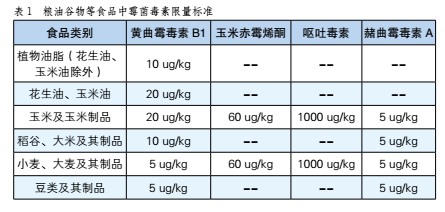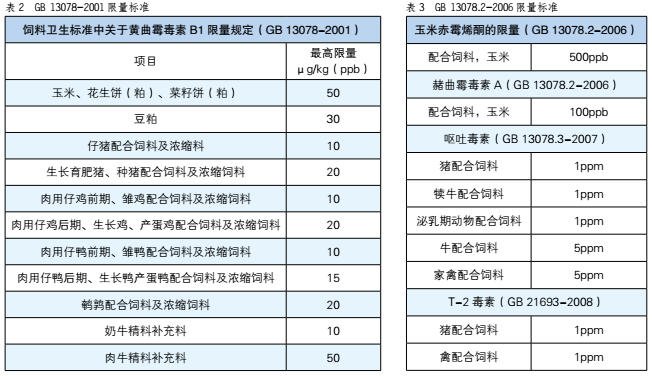- 10 minutes accurate quantitative determination
Mycotoxins are toxic metabolites produced by toxigenic fungi under suitable environmental conditions. According to the Food and Agriculture Organization of the United Nations, about 25% of the world's cereals are inadmissible for being contaminated with mycotoxins to varying degrees, which not only causes huge economic losses, but also mycotoxins produced by fungi can cause humans and animals. Poisoning, even when it is serious, can cause cancer.
Pollution of mycotoxins in grain, oil and grain feeds Currently, there are more than 150 fungi known to produce mycotoxins, and there are about 300 mycotoxins, including aflatoxin, ochratoxin, zearalenone and their derivatives. Toxoids, vomiting toxins, fumonisins, T2 toxins, and the like. The growth and reproduction of fungi require certain conditions of temperature and humidity. The optimum growth temperature is generally 20-30 °C, and the optimum temperature for mold reproduction and production is 25-30 °C. Among them, the most suitable growth temperature for Aspergillus is about 30 °C, the genus Penicillium is about 25 °C, and the genus Fusarium is about 25 °C. Mycotoxins are produced when the fungus is in a dry, cold or stressful state that competes with other fungi. Due to the certain regional nature of fungal growth, the types of mycotoxins that are dominant in different regions are also different. For example, in subtropical and tropical regions, agricultural products and feeds are mainly contaminated with aflatoxins and certain ochratoxins; while zearalenone, vomitin, ochratoxin A, T-2 toxins, and fumagillin are It has a significant advantage in temperate regions.
According to the investigation report on the mildew of grain, oil and grain feed in China, the detection rate and content of fungi in the southern region are much higher than those in the northern region, especially from May to September. The average temperature in the southern region is above 20 °C, and the average relative humidity is 80. More than %, in this high temperature and high humidity environment, fungi grow and breed most vigorously, most of the grain feed mold changes occur in this season; although the summer in the north is higher, the relative humidity is lower, it is not easy to mold, most of them Mycotoxins are produced by improper processing, transportation or storage.
At present, the detection methods of mycotoxins are mainly divided into two categories, namely, confirmation methods and rapid methods. The confirmation method is mainly based on physical and chemical equipment such as thin layer chromatography (TLC), gas chromatography (GC), high pressure liquid chromatography (HPLC) and various combined technologies such as gas chromatography-mass spectrometry (GC-MS), liquid quality. Combined use (HPLC-MS), etc.; rapid methods are mainly based on immunochemical analysis methods such as immunoaffinity column-fluorescence detection (IAC-FLD), enzyme-linked immunosorbent assay (ELlSA) and colloidal gold immunochromatography Law and so on.
Accurate and legally recognized results are the biggest advantages of physical and chemical methods, but the physical and chemical methods are expensive, the pre-processing is complicated, the operation is cumbersome, the efficiency is low, and the cost is extremely high, so it is not suitable for large-scale sample screening and daily internal control. Testing is generally only used for final confirmation. The enzyme-linked immunosorbent assay (ELISA) method and the colloidal gold rapid test card are commonly used rapid detection methods in enterprises, but they all have their own advantages and disadvantages: the ELISA method has relatively high sensitivity and can be quantitatively detected, but the operation process is relatively complicated and the environment is High requirements for personnel, complex environmental interference factors, and poor repeatability; colloidal gold detection card can meet the requirements of rapid on-site, can be quickly measured within 5~10min, but can only be qualitative, and the sensitivity is low, subjective comparison with naked eyes Strong, poor repeatability.
Mycotoxin limit standard


Fluorescence quantitative rapid detection system for mycotoxin in grain, oil and grain feeds Based on the world's leading fluorescence quantitative FPOCT technology platform, Shanghai Feishen Biosystems has developed a rapid quantitative detection system for mycotoxin, which combines colloidal gold rapid, enzyme-linked immunoassay and chromatography. Accurate characteristics, can quickly and accurately quantify the mycotoxin in grain and oil grain feed within 10min, including aflatoxin B1, zearalenone, vomiting toxin, ochratoxin A, fumonisin, T2 toxin, etc. The content and sample pretreatment are simple (only 8 min), the six toxins can be extracted at one time, the operation is simple, only one step is needed, no standard is needed, no standard curve is needed, and the fluorescence immunoassay meter reading is adopted, and the result is accurate and reliable. It can be printed on site, and the accuracy is highly consistent with the detection results of HPLC method. It provides a new technical means for the rapid detection and control of mycotoxins. It is suitable for all kinds of raw material storage and storage, grain and oil processing enterprises, feed processing enterprises, third-party testing. Institutional and government related regulatory authorities.
Test operation process (1) Sample pulverization (1 min);
(2) passing through a 20 mesh screen;
(3) Multiplying sample (1g ± 0.02);
(4) Add 5 mL of extract;
(5) Oscillation extraction (5min);
(6) Centrifugation at 4000 rpm (1 min);
(7) Take the supernatant to dilute;
(8) Spot detection 100uL;
(9) Incubate at a constant temperature for 10 min;
(10) Reading and printing.
Advantages of Fluorescence Quantitative Rapid Detection System for Biometric Mycotoxins (1) Rapid quantification of 10 min: rapid detection of colloidal gold, quantitative detection by enzyme-linked immunosorbent assay, and accurate detection of chromatographic mass spectrometry, achieving rapid and accurate quantitative detection of mycotoxins within 10 min. The test results can be printed on site.
(2) Built-in quantitative standard curve: The built-in standard curve of the instrument can be used to make the standard curve without testing, which not only saves the cost, but also avoids the contact of the operator with the mycotoxins and protects the safety of the operator.
(3) On-the-go inspection: There is no requirement for the sample size to be tested. It can be followed by a single or a small number of samples, or a large number of samples can be detected at the same time, and on-site detection can be realized.
(4) Easy to operate: All kinds of mycotoxins can be detected in one extraction, and no pH adjustment of the test sample is required.
(5) Low configuration requirements: low requirements for supporting equipment and personnel, and operators can be mastered only by short-term training.
(6) Remote network support: The instrument can automatically perform standard curve reading, software upgrade, problem diagnosis and quality control through the network.
(7) High cost performance: the price of the flower colloidal gold test strip, the result of chromatographic detection, and saving manpower and material resources, greatly reducing the cost of testing.